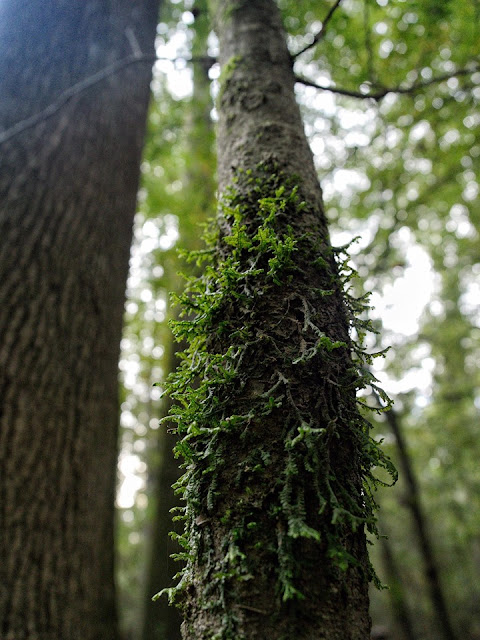Brian and I trekked the pathless bottomland and swamp from Davis Eddy to Sanctuary Lake on a muggy Saturday morning. I wanted to explore Sanctuary from the north, and hoped we might find a relict baldcypress there. We didn't, but the habitat was beautiful, and we moved through the relatively open forest with ease. The area around Davis Eddy, in the northern part of the Pascagoula River Swamp, is rapidly becoming another favorite of mine. Birds weren't notably active, but we did spy a bald eagle, flying low over the River, the first one we have seen in this area in our five years of exploring here.
All photos are by Brian Carlisle, unless otherwise noted.
All photos are by Brian Carlisle, unless otherwise noted.
In this rich bottomland forest, we found our first hornbeam (not pictured). We have likely seen them before, but not recognized them; Brian used an app on his phone to help in its identification. I am continually impressed by the biodiversity of the Pascagoula River Swamp.
Sanctuary Lake. As of this writing, the rains have already begun, and come Spring (if not sooner), the lake will be full again.
Photo: Chris Carlisle.
Photo: Chris Carlisle.
Photo: Chris Carlisle.
We made our way north-east along the shoreline, startling a small herd of wild swine, which disappeared quickly into the tall grass of the lake bed.
A young copperhead, the first one we have encountered in the Pascagoula River Swamp. In my experience, they are more common in piney woods.
This slough connects Davis Eddy, near the Pascagoula River, to Big Lake to the south. In the Pascagoula River Swamp, everything is connected, it seems.
Cardinal flower, a personal favorite of mine.
A flash drought has afflicted much of the South recently, and the Pascagoula River Swamp was not excepted. This is a small pond near the main WMA road going to Hutson Lake. I spied several pieces of driftwood there on the drive to Hutson, and on the way back suggested we stop and have a look. We often make an extra effort to bring interesting pieces of wood home with us.
We assumed these holes were made by turtles, or something. Brian picked up a large piece of wood that lay near one of the holes, and that Something bellowed loudly from underground.
We did not know that alligators would dig holes such as these. Now we know better.



































No comments:
Post a Comment